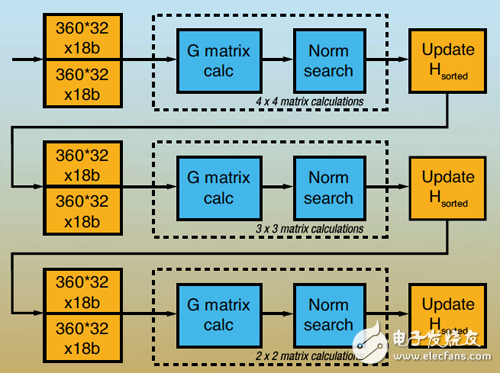Designing advanced broadband wireless system receivers using Xilinx Virtex-5 FPGAs, powered by AutoESL’s advanced synthesis tools, enables the implementation of complex signal processing algorithms. This approach is particularly valuable for next-generation wireless systems like WiMAX, where high throughput and efficiency are essential.
Space division multiplexing (SDM) combined with MIMO technology has revolutionized wireless communication by significantly improving spectral efficiency and system capacity. As a core component in OFDM-based systems such as WiMAX, SDM-MIMO demands powerful computational resources to handle its intensive signal processing tasks.
One of the key techniques in MIMO systems is sphere decoding, which offers near-optimal performance in terms of bit error rate (BER), comparable to maximum likelihood detection. However, traditional DSP processors lack the necessary speed and parallelism to support real-time sphere decoding, making them unsuitable for high-performance wireless applications.
Field Programmable Gate Arrays (FPGAs) offer a compelling alternative due to their high parallelism and flexibility. Modern FPGAs can execute complex algorithms like sphere decoding at much higher speeds than conventional processors, often achieving performance gains of over 100 times while maintaining cost-effectiveness.
Despite these advantages, FPGAs have not been widely adopted in wireless signal processing due to the complexity of hardware design and the need for expertise in languages like VHDL or Verilog. To address this challenge, advanced synthesis tools now allow designers to describe algorithms in high-level languages, automatically generating efficient RTL code that can be implemented on FPGAs.
These tools, such as AutoESL's AutoPilot, enable faster development cycles and more reliable designs, making FPGA-based solutions more accessible to software engineers and algorithm developers. In this project, we used AutoPilot to implement a sphere decoder for a MIMO system under the 802.16e standard, targeting a Xilinx Virtex-5 device operating at 225MHz.
Sphere Decoding
Sphere decoding is a critical part of MIMO detection, offering excellent BER performance while reducing computational complexity compared to brute-force methods. It is especially useful in systems requiring high data rates and robust signal recovery.
The block diagram of the MIMO 802.16e radio receiver includes three main components: channel reordering, QR decomposition, and the sphere detector. After estimating the channel matrix, the system processes the data through these stages to generate soft outputs suitable for use with soft-decision decoders like turbo decoders.

Figure 1: Block diagram of the sphere decoder
Channel Matrix Reordering
Channel reordering plays a crucial role in optimizing the performance of sphere decoding. By rearranging the order of antenna signals based on their influence, the system can achieve near-maximum likelihood performance with reduced complexity.
The algorithm iteratively determines the optimal column order of the channel matrix by selecting rows with the smallest or largest Euclidean norms. This allows the system to process weaker signals first, gradually moving toward stronger ones, thus improving overall detection accuracy.
To meet high data rate requirements, we implemented a pipelined channel ordering module that processes up to five channels simultaneously in time-division multiplexing (TDM) mode. This design ensures high throughput while managing the computational load efficiently.

Figure 2: Iterative channel matrix reordering algorithm
The G matrix calculation is a key step in the reordering process, involving complex rotations of both diagonal and non-diagonal elements. These operations form the basis of the pulsating array used in our design. Once the optimal channel ordering is determined, QR decomposition is performed on the real matrix coefficients, using a functional unit similar to a QRD engine but adapted for real-valued inputs.

Multi-function, multi-device charging solution - With a large 20,000 mAh built-in battery, the mophie Powerstation XXL High Capacity mobile Power supply charges your phone super fast and can fully charge your phone up to 4.6 times. Charge three devices simultaneously
Charge Your Devices Fast - With 18W USB-C power output, charge your phone the fastest and get up to 50% battery power in just 30 minutes. The USB-C port can be used to charge the power station itself during recording hours.
Compatible with various gadgets - In addition to the USB-CpD port, the Portable Portable Power Supply also comes with 2 USB-A ports for charging smartphones, tablets, and other USB devices. The package includes a charging cable (USB-A to USB-C).Functional and stylish - With a classic fabric finish that prevents scuffs and scratches, this mobile power supply is your perfect travel companion. Easily fit in your bag, so you can carry it to work or on adventures without a separate charger
Its main components include: a battery for electrical energy storage, a circuit (DC-DC converter) to stabilize the output voltage, and most mobile power supplies come with a charger for charging as a built-in battery.
100W Power Bank,power bank price,portable phone charger,power bank 30000mah
suzhou whaylan new energy technology co., ltd , https://www.xinlingvideo.com